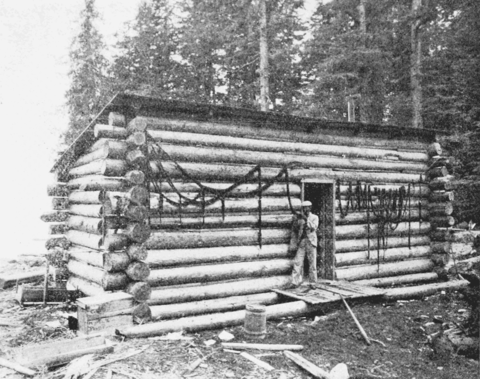bay of Naples or the Adriatic and almost equaling the matchless Peruvian coast and the sea-front of Ecuador.
The log buildings of the Station stand in a small clearing and have en outlook upon the Straits and upon the Pacific. With the forest behind and the ocean in front their situation is as perfect scenically as it is for the purposes of science. Miles of tide-pools, reefs and kelp-covered rocks are easily accessible along the water front, while landward the hills rise to a height of nearly 3,000 feet. Four miles back are the mouths of the San Juan and Gordon rivers, both of which flow into Renfrew port and may be utilized as canoe routes towards the lakes and mountains of the interior. Over the whole country side spreads the primeval and well-nigh impenetrable forest of Vancouver with its gnarled yews, enormous cedars and towering spruces. On each side of
the Station buildings a little rivulet comes down from the hills and the waters of the two mingle on the rocks just below high-tide mark. Altogether, the opportunity for the study of marine and coastal botany and zoology is magnificent, and there is no good reason why it should not be possible to maintain a thoroughly well-equipped international marine station at the entrance to the waters of Puget Sound. The location is altogether admirable, rich and interesting, and practical work has begun.

